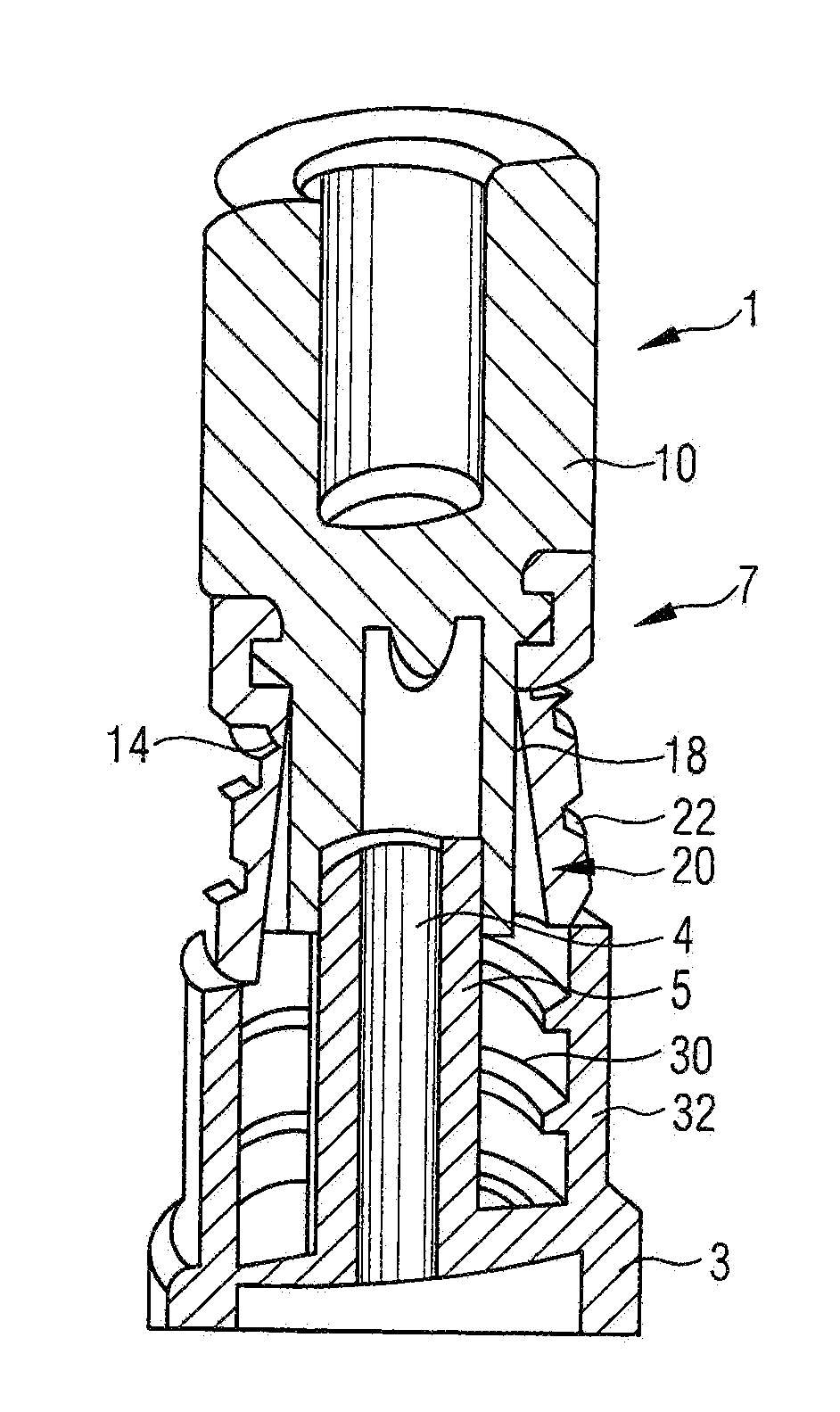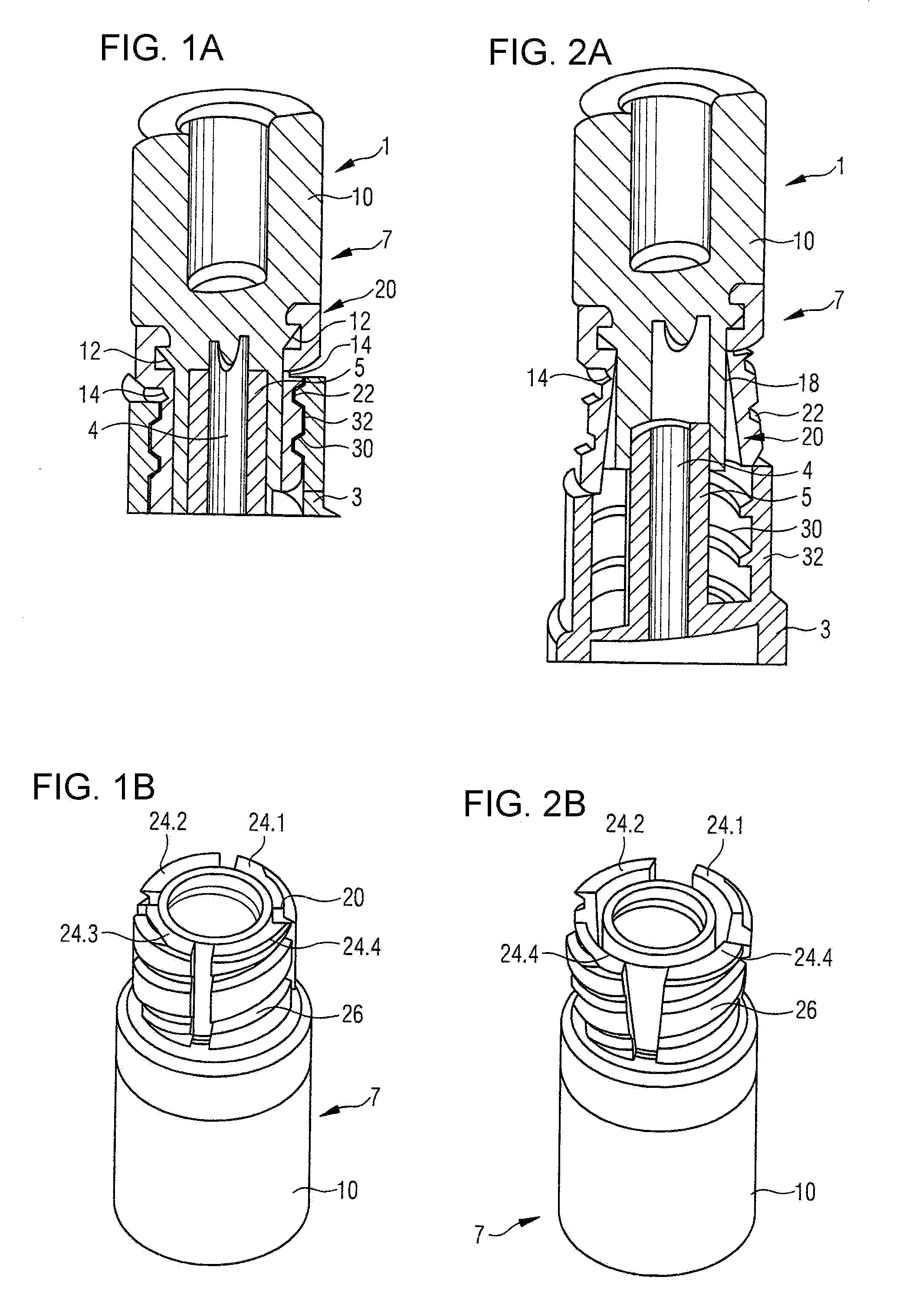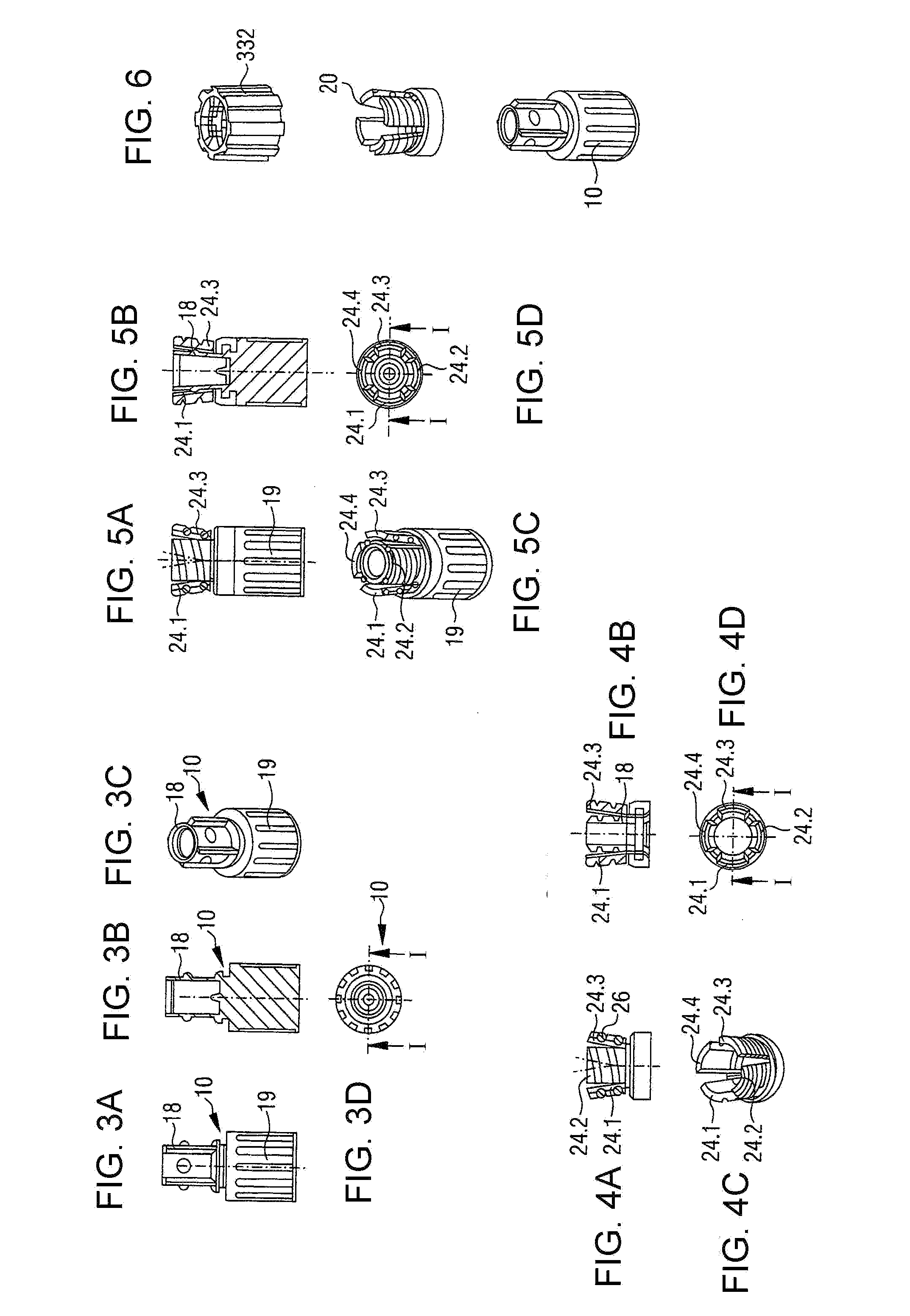Closure, in particular a syringe closure for closing a distal opening of a syringe body in a sealing manner
a technology of syringe body and closure, which is applied in the field of closure, can solve the problems of high patient infection risk, incorrect treatment of patients, and use in certain fields of applications, and achieve the effect of reducing the force expenditure, reducing the torque, and reducing the cost of production
- Summary
- Abstract
- Description
- Claims
- Application Information
AI Technical Summary
Benefits of technology
Problems solved by technology
Method used
Image
Examples
first embodiment
[0054]Referring now to the drawings, and more particularly to FIG. 1A, there is shown a complete syringe closure 1 according to the present invention. Complete syringe closure 1 includes a syringe body 3 with a distal opening 4. Distal opening 4 is surrounded by an elastomer, in particular an elastomer which is permissible in pharmaceutical applications. Distal opening 4 of syringe cone 5 is hereby sealed in a closed state. The elastomer can also be colored. Permissible elastomers are thermoplastic elastomers and butyl rubbers. The elastomers are selected such that the entire closure cap 7 is capable of being sterilized in all conventional sterilization methods, for example gamma radiation, ETO or steam at temperatures of 121° C. and higher, as well as electron radiation. This allows broad use, in addition to glass syringes, also of thermoplastic syringes, as illustrated in FIGS. 1A-2B. In the case of plastic syringes the fastening element 32, or respectively the fastening ring 32, ...
second embodiment
[0067]the present invention is illustrated in FIGS. 7A to 12B. In contrast to the embodiment according to FIGS. 1A to 6 the hard component is longer than base component 110 itself in the embodiment which is shown in FIGS. 7A to 12B so that base component 110 only surrounds a small part of the syringe cone or respectively distal opening 105, so that base component 110 according to FIGS. 7A to 7D cannot be held on the syringe cone with the distal opening without the hard component which is equipped with the thread and which is shown in FIGS. 8A to 8D. The region which surrounds the syringe cone is pictured in FIG. 7B and is identified with 118. It is clearly shorter in length than section 18 in FIGS. 1A to 2D.
[0068]The same reference numbers increased by 100 are generally used for same functional components in FIGS. 7A to 12 as in FIGS. 1 to 6. Clearly visible in FIG. 7C are recesses 117.1, 117.2, 117.3, 117.4 in the base body or respectively base element 110 which accommodate the exp...
PUM
 Login to View More
Login to View More Abstract
Description
Claims
Application Information
 Login to View More
Login to View More - R&D
- Intellectual Property
- Life Sciences
- Materials
- Tech Scout
- Unparalleled Data Quality
- Higher Quality Content
- 60% Fewer Hallucinations
Browse by: Latest US Patents, China's latest patents, Technical Efficacy Thesaurus, Application Domain, Technology Topic, Popular Technical Reports.
© 2025 PatSnap. All rights reserved.Legal|Privacy policy|Modern Slavery Act Transparency Statement|Sitemap|About US| Contact US: help@patsnap.com



